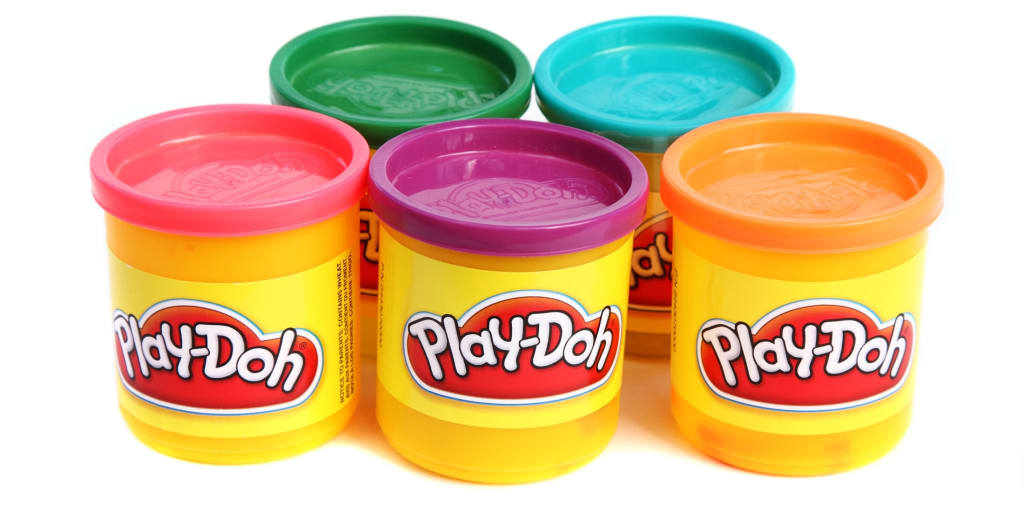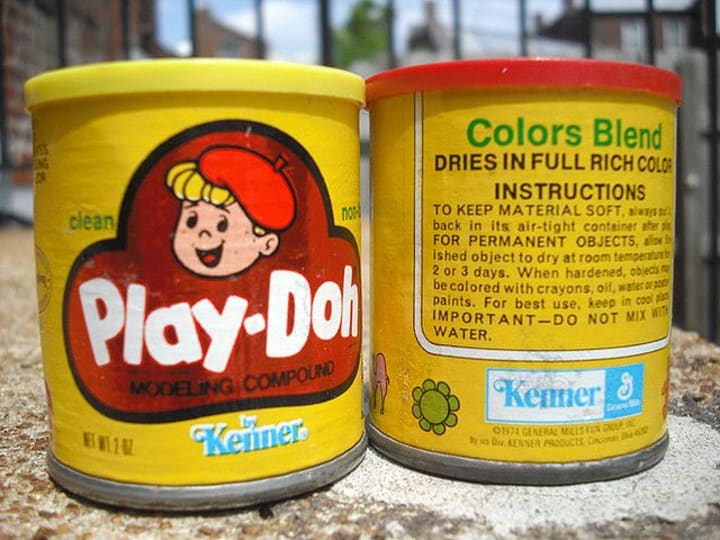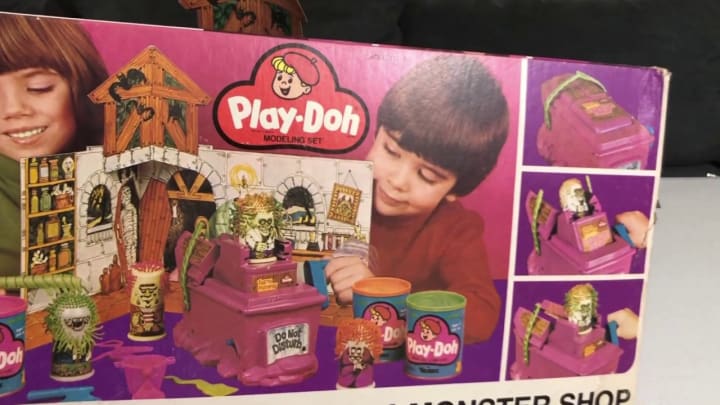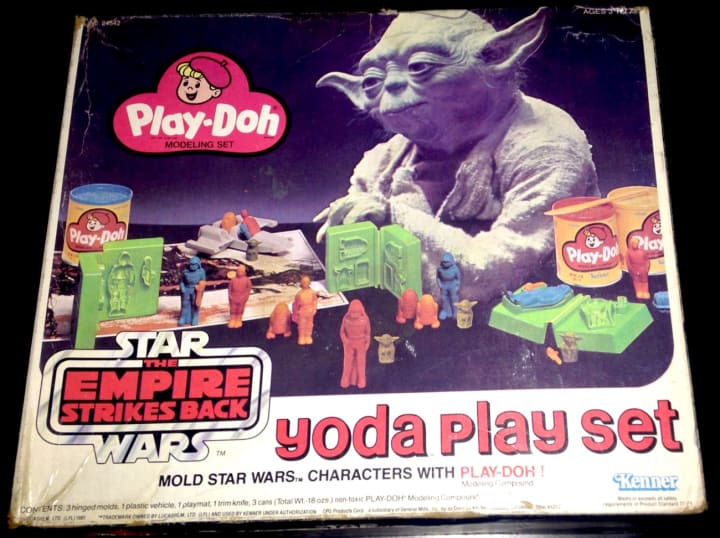The History of Play-Doh is the History of American Capitalism
I once wanted to know where Play-Doh came from. What I discovered was a microcosm of the history of American capitalism.

I have a fascination with the history of products and companies. I find that you can learn a lot about American history and the history of capitalism by collecting random facts about ancient products that have thrived for decades. One such product is Play-Doh, the children’s colorful clay product that nearly every child in America has fashioned into various shapes for decades. Where did Play-Doh come from? I happen to know the answer for some reason.
Play-Doh was not called Play-Doh when it was first invented. In fact, it was not invented to be a children’s play-thing at all. In Cincinnati, Ohio in the mid-1930s what would become Play-Doh didn’t have a name. It was created by a company called Kutol Products Company and was inspired to creation by the owners of the local Kroger’s Grocery Store who approached Kutol’s Noah McVicker to ask if they had a product that could clean coal dust from wallpaper

The product was set to be discontinued after more homes and businessesa began to be less reliant on Coal for warmth. That, plus the invention of a type of wallpaper that was more resistant to staining meant that the Kutol’s puddy product was fast becoming obsolete. In 1955 Noah McVicker was looking for a new purpose for the product before completely getting rid of it and that’s when Noah’s brother, Joe McVicker, had a fateful conversation with his sister in-law.
The sister-in-law, Kay Zufall, happened to be a teacher in the Cincinnati area and she’d been inspired by an article in the local newspaper about using the non-toxic wallpaper cleaner as modeling clay in school. Joe shared the idea with Noah, along with Kay’s idea for a name for the product, Play-Doh. Later that same year, 1955, The McVicker brothers took Play-Doh to a national education convention where they pitched the idea to school administrators around the country.

The reaction was immediate and very successful and by 1956, the McVicker brothers had created an entirely new company just to produce and market Play-Doh. Rainbow Crafts Company came together after the McVicker brothers had secured a contract with an Ohio Department store to sell the product in their stores where it became a hit. Teachers had kids playing with Play-Doh in classrooms and that led to parents buying Play-Doh for kids to play with at home.
The McVicker Brothers were also all in on the ground floor of television. When television began marketing directly to kids, via shows such as Captain Kangaroo and Romper Room, those shows brought Play-Doh a national spotlight and sales of the product began to soar. Before the first year full year anniversary of the launch of Play-Doh, sales were more than $3 million dollars, a boatload of money in 1956. That would be close to $29 million dollars today.

After less than a decade in business, the McVicker Brothers sold Rainbow Crafts Company to General Mills where the company would remain before being spun off to General Mills’ toy subsidiary Kenner in 1971. Kenner unfortunately began to struggle in the late 1980’s and in 1991 Kenner was sold completely to Hasbro where Play-Doh has existed ever since, under the same corporate umbrella as The Transformers, Parker Brothers games and Milton Bradley games.
As I said earlier in this article, the history of products is the history of capitalism in America. A company invents a product, thrives, sells to one larger company, which sells to an even larger company and what was once innovation on local scale becomes an implacable industry standard, a well known intellectual property to be exploited for massive profits for years to come. Truly, the story of Play-Doh is the story of the corporatization of American innovation, and the flow of capital from the small business to massive octopedal corporations.

See a need and fill it, that’s where innovation is born. The brothers, Noah and Joe McVicker saw a need for a way to clean coal dust off of wallpaper without damaging the wallpaper and ended up creating a multi-billion dollar product in a completely different field of application. I, for one, find this story fascinating and unique, emblematic of so much of American business history. Choose a product, any major brand product and you too can fall down the rabbit hole of the history of American capitalism from the original innovation to today’s corporate boardrooms and Wall Street backrooms.
About the Creator
Sean Patrick
Hello, my name is Sean Patrick He/Him, and I am a film critic and podcast host for the I Hate Critics Movie Review Podcast I am a voting member of the Critics Choice Association, the group behind the annual Critics Choice Awards.







Comments
There are no comments for this story
Be the first to respond and start the conversation.